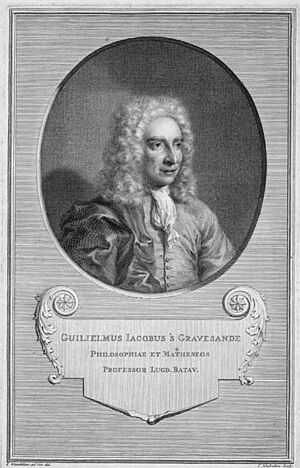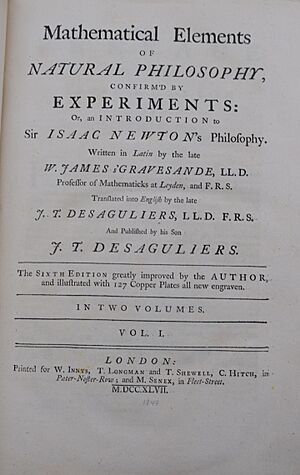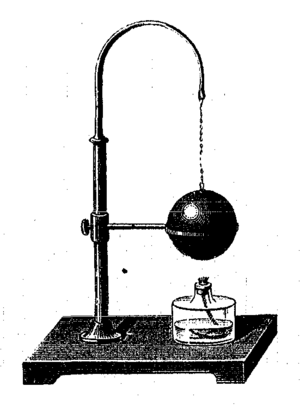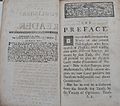Willem 's Gravesande facts for kids
Quick facts for kids
Willem 's Gravesande
|
|
|---|---|
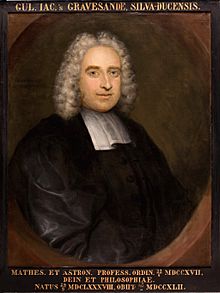
Willem Jacob 's Gravesande (1688–1742)
|
|
| Born | 26 September 1688 |
| Died | February 28, 1742 (aged 53) |
| Nationality | Dutch |
| Alma mater | Leiden University |
| Known for | Experimental proof of  |
| Scientific career | |
| Fields | Philosopher and mathematician |
| Institutions | Leiden University |
| Doctoral advisor | Johannes Voet |
| Doctoral students | Pieter van Musschenbroek, Jean Allamand |
| Influences | Isaac Newton |
| Influenced | Émilie du Châtelet |
Willem Jacob 's Gravesande (born September 26, 1688 – died February 28, 1742) was a smart Dutch scientist. He was a mathematician and a natural philosopher. He is best known for creating experiments that showed how the laws of classical mechanics work. He also made the very first measurement of kinetic energy.
As a professor at Leiden University, he taught mathematics, astronomy, and philosophy. He was very important in spreading the ideas of Isaac Newton across Europe.
Contents
A Life of Learning and Discovery
Willem Jacob 's Gravesande was born in a place called 's-Hertogenbosch. He studied law at Leiden University and finished his studies in 1707. After university, he worked as a lawyer in The Hague. But he also loved to talk about new ideas and learn about math and science.
In 1711, he published a book called Essai de perspective. This book was about how to draw things so they look like they have depth. A famous mathematician named Johann Bernoulli really liked his book. 's Gravesande also helped start a science magazine called Journal littéraire in 1713.
Meeting Important People
In 1715, 's Gravesande went to London as part of a group from the Netherlands. While there, he met King George I. He also met the famous scientist Isaac Newton. During this visit, 's Gravesande was chosen to be a member of the Royal Society. This is a very old and respected group of scientists.
In 1717, he became a professor at Leiden University. He taught mathematics and astronomy. He was key in bringing Newton's ideas to the Netherlands. Later, he also taught architecture and philosophy.
Turning Down Big Offers
's Gravesande got married to Anna Sacrelaire in 1720. They had two sons, but sadly, both died when they were young. Because he was so well-known, other leaders wanted him to work for them. In 1724, Peter the Great, the Russian Tsar, asked him to join a new science academy in Russia. Then, in 1737, Frederick the Great offered him a job in Berlin. But 's Gravesande chose to stay in Leiden.
Understanding Motion and Energy
's Gravesande's most important science book was published in 1720. It was called Mathematical Elements of Natural Philosophy, Confirmed by Experiments. In this book, he showed how to teach Newton's ideas about motion using experiments. Many important thinkers, like Voltaire and Émilie du Châtelet, saw his work. Émilie du Châtelet later used his ideas about kinetic energy in her own writings. His book was quickly translated into English.
The Kinetic Energy Experiment
In 1721, 's Gravesande got involved in a debate about a German inventor named Johann Bessler. Bessler claimed he had built a perpetual motion machine. This is a machine that could run forever without any extra energy.
At first, 's Gravesande thought perpetual motion might be possible. But then, in 1722, he did a series of experiments. He dropped brass balls from different heights onto a soft clay surface. He noticed something important:
- If a ball had twice the speed, it made a hole four times as deep.
- If a ball had three times the speed, it made a hole nine times as deep.
From this, he figured out that the "live force" (what we now call kinetic energy) of a moving object depends on its mass and the square of its speed. This means if you double the speed, the energy goes up four times! This discovery was very important for understanding how things move.
Even though his experiments showed that perpetual motion was unlikely, 's Gravesande still thought Bessler might have found something new. However, most scientists today agree that Bessler's machine was a trick.
's Gravesande's Ring
's Gravesande is also famous for a simple experiment that shows thermal expansion. This experiment is still used in science classes today! It's called "'s Gravesande's experiment" or "'s Gravesande's ring."
The equipment is simple:
- A small metal ball with a handle.
- A metal ring on a stand.
When the ball and ring are at the same temperature, the ball fits perfectly through the ring. But if you heat the ball, for example, by putting it in hot water or holding a flame to it, the metal expands. It gets bigger! Then, the ball will no longer fit through the ring. Once the ball cools down, it shrinks back to its original size and fits through the ring again. This shows how heat makes things expand.
Works
- Essai de perspective, 1711
- Philosophiae Newtonianae Institutiones, in usus academicos, 1723
- An essay on perspective, 1724
- Mathematical elements of physicks, prov'd by experiments : being an introduction to Sir Isaac Newton's philosophy, 1720
- Introductio ad Philosophiam, Metaphysicam et Logicam, 1736
- Mathematical Elements of Natural Philosophy, Confirm'd by Experiments: or, An introduction to Sir Isaac Newton's philosophy (Volume I), 1747 (first printed in 1720)
- Mathematical Elements of Natural Philosophy, Confirm'd by Experiments: or, An introduction to Sir Isaac Newton's philosophy (Volume II), 1747 (first printed in 1721)
- Oeuvres Philosophiques et Mathématiques de Mr. G. J. 'sGravesande, ed. with memoir by J. Allamand, 1774
See also
- 9682 Gravesande, an asteroid named after Willem Jacob 's Gravesande.


